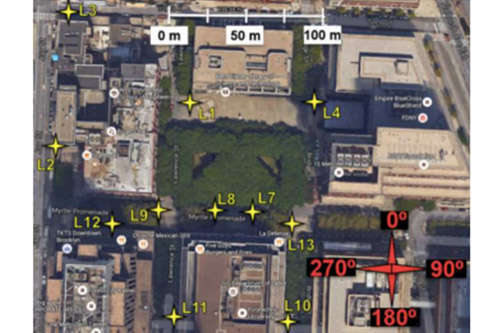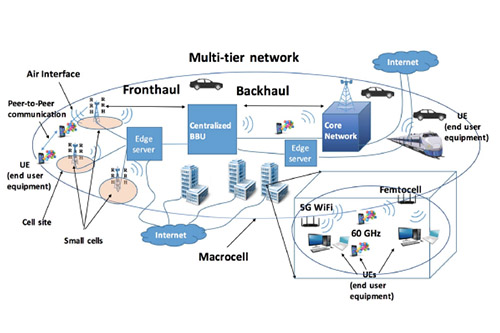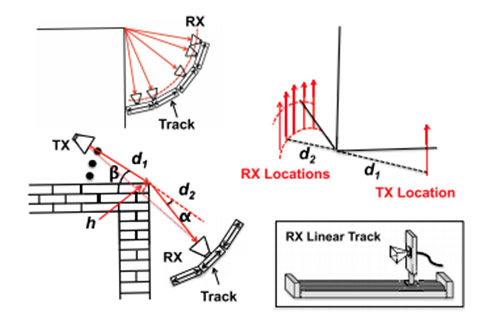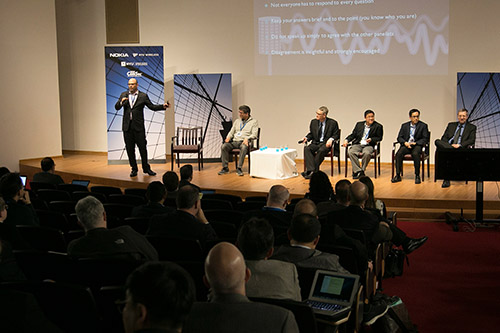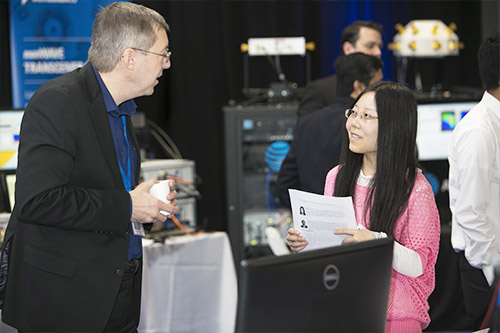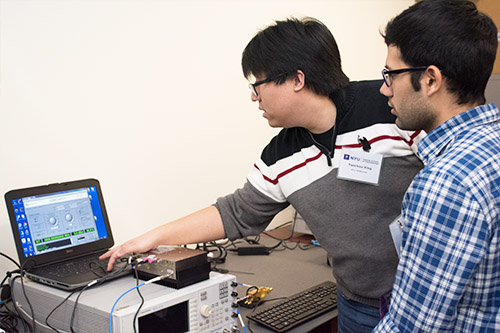Satellite-Terrestrial Interference and Spectrum Sharing in the Upper Mid-Band

NYU Wireless P.I.s
Research Overview
Proj 1: Joint Detection and Nulling for TN–NTN Coexistence
This work studies spectrum coexistence between terrestrial base stations (TN-BSs) and satellite downlink receivers (NTN-UEs) in the upper mid-band FR3 (7–24 GHz)—a key range for future 6G systems. To address the challenge of interference from TN-BSs to unknown satellite terminals without location or channel knowledge, the paper proposes a four-stage interference-nulling framework enabling TN-BSs to detect, estimate, and suppress interference toward nearby satellite users.
· Beacon transmission: NTN-UEs periodically broadcast preamble signals.
· Victim detection: TN-BSs detect potential satellite receivers via matched filtering and energy thresholding.
· Channel estimation: The TN-BS estimates the interference channels from the received preambles.
· Beamforming & nulling: Using the estimated channels, the TN-BS performs regularized spatial nulling, simultaneously serving its own users while steering nulls toward detected NTN-UEs.
Key Contributions
Detection–Nulling Protocol: A complete framework enabling terrestrial systems to identify and protect incumbent satellite receivers without explicit location knowledge.
Analytical Insights: Reveals the trade-off between path loss, detection reliability, and residual interference under imperfect channel estimation.
Ray-Tracing Validation: Comprehensive Sionna-RT simulations of a 6 km × 6 km rural area near Boulder, Colorado demonstrate effective interference suppression even with high victim densities.
Massive MIMO Findings: Results show that 64+ antenna elements are required for robust coexistence, as large arrays improve nulling depth while preserving TN-UE SNR.

Fig1. Four stage interference-nulling protocal

Fig2. Beamforming nulling effect.
Proj 2: Min-Max Beamforming and Anti-Jamming for Multi-Satellite Networks
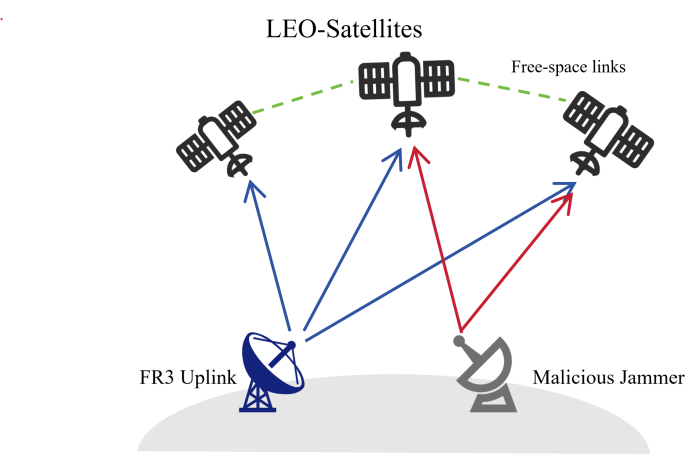
This work formulates the interaction between a desired transmitter and an adversarial jammer as a min-max beamforming game in multi-satellites non-terrestrial networks:
The transmitter optimizes its spatial covariance to maximize achievable rate, while the jammer adapts its strategy to minimize it. Incorporating free-space optical (FSO) inter-satellite links, the framework further supports coordinated beamforming and interference mitigation across distributed satellites.
The framework captures their iterative best responses-water-filling for the transmitter and eigen-based alignment for the jammer—and extends to fair multi-satellite beamforming via convex relaxations that balance power and robustness against MIMO and directional jammers.
This establishes a unified foundation for anti-jamming and interference-resilient communication in future satellite-terrestrial systems.

 2025 Brooklyn 6G Summit — November 5-7
2025 Brooklyn 6G Summit — November 5-7 Sundeep Rangan & Team Receive NTIA Award
Sundeep Rangan & Team Receive NTIA Award 2025 Open House
2025 Open House